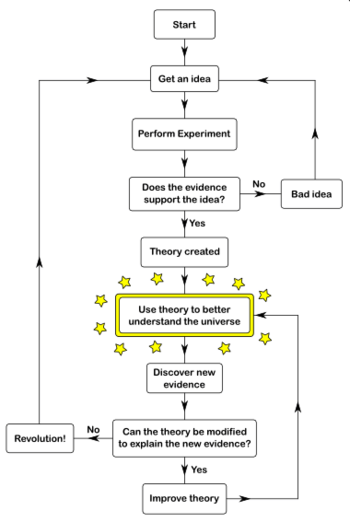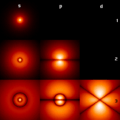Scientific theory facts for kids
When people talk every day, they often use the word "theory" to mean a guess or an idea. But in science, a scientific theory is much more than that! It's a very well-tested idea that explains many different things. Think of it like a big puzzle where all the pieces fit together perfectly.
A scientific theory starts as a hypothesis, which is an educated guess. This guess is then tested over and over again with experiments. If a theory is ever shown to be wrong, even a little bit, scientists will either change it or get rid of it completely. This is how science learns and grows!
Contents
What Makes a Theory Scientific?
To be a true scientific theory, an idea must pass some important tests:
- It must be tested many, many times. Different scientists in different places need to get the same results.
- It must be stated very clearly. Sometimes, this even means using mathematics to describe it.
- It must fit with all the other scientific theories we already know.
Science has many different areas, like physics, chemistry, biology, geology, and astronomy. A scientific theory should make sense across all these areas. For example, the atomic theory says that everything is made of tiny particles called atoms. This idea works for chemicals in chemistry, living things in biology, rocks in geology, and even planets in astronomy!
How Theories Change
Sometimes, scientists discover something new that doesn't quite fit an old theory. This is a big deal in science! A scientist can become famous for finding an exception to a long-accepted rule. For instance, Albert Einstein became famous for his theory of relativity. This theory showed that Isaac Newton's laws of motion, which had been accepted for hundreds of years, needed to be updated for very fast speeds or very strong gravity. Newton's ideas weren't completely wrong, but Einstein's theory made them even more accurate.
Famous Scientific Theories
Here are some of the most important scientific theories. They have been tested thousands of times, and scientists haven't found any exceptions yet!
- The atomic theory of matter: This theory says that all matter, everything around us, is made up of tiny particles called atoms.
- The law of conservation of mass and energy: This law explains that in chemical and physical changes, the total amount of mass and energy stays the same. In atomic reactions, mass can turn into energy, and energy can turn into mass, following the famous formula E = mc2.
- The cell theory of living things: This theory states that all living things are made up of tiny units called cells.
- The tectonic theory of geology: This theory explains that the Earth's surface is made of huge plates that move very slowly. This movement causes earthquakes and volcanoes.
- The periodic table of elements: This is a special chart that organizes all the known chemical elements based on their properties. It helps scientists understand how different atoms behave.
- The theory of relativity: This theory, developed by Albert Einstein, explains how space and time are connected. It shows that scientific laws work the same way for observers who are moving at different speeds.
- Quantum theory: This theory helps us understand the behavior of matter and energy at the smallest possible levels, like inside atoms. It says that energy comes in tiny packets called "quanta."
- The theory of evolution: This theory explains how living things have changed over very long periods of time. It helps us understand how different species came to be the way they are today.
The Germ Theory Example
The germ theory of disease is a great example of how scientific theories can change over time. Long ago, people thought diseases were caused by angry gods, curses, or bad behavior. They didn't know about tiny living things called microorganisms, or germs, because germs are too small to see!
When the microscope was invented, scientists finally saw germs. This led to the idea that germs cause diseases. Thanks to the germ theory, we now have many cures for illnesses. However, scientists later learned that not all diseases are caused by germs. For example, the flu is caused by viruses, not bacteria, and scurvy is caused by not getting enough vitamins. So, the germ theory was updated to say, "Some diseases are caused by germs." This shows how science is always learning and improving its explanations!
Related pages
Images for kids
-
The first observation of cells, by Robert Hooke, using an early microscope. This led to the development of cell theory.
-
In quantum mechanics, the electrons of an atom occupy orbitals around the nucleus. This image shows the orbitals of a hydrogen atom (s, p, d) at three different energy levels (1, 2, 3). Brighter areas correspond to higher probability density.
See also
 In Spanish: Teoría científica para niños
In Spanish: Teoría científica para niños




